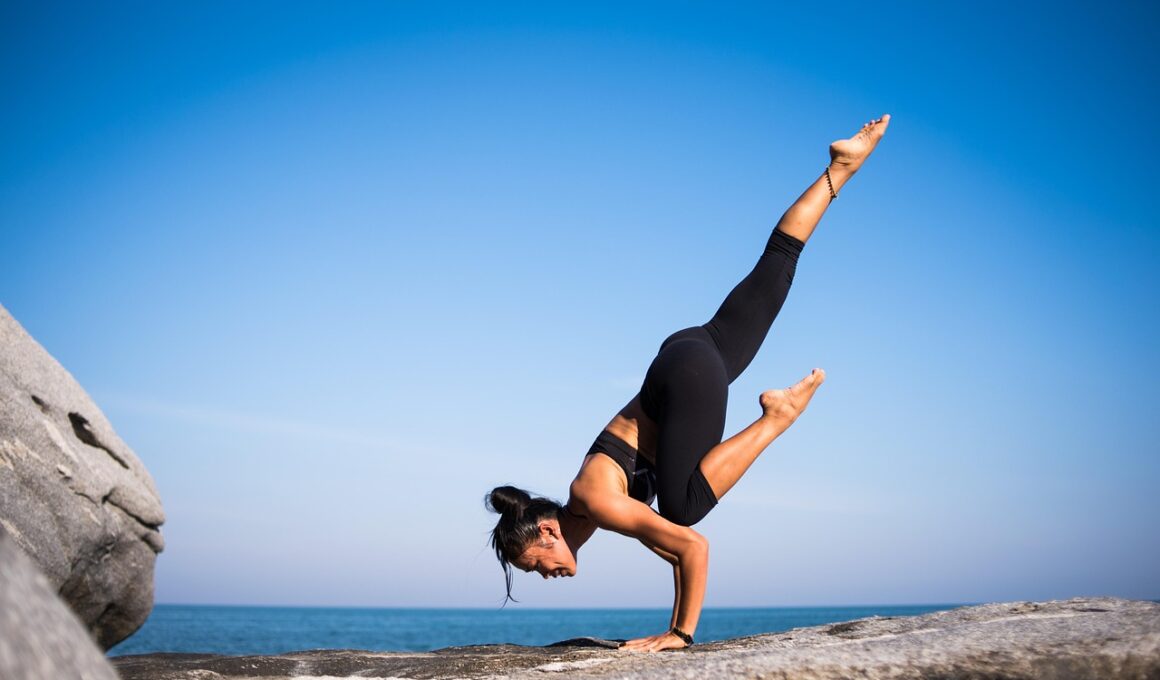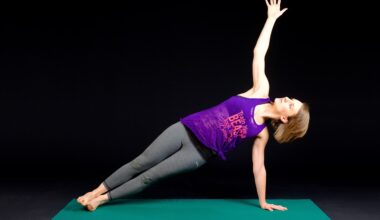Preventing Falls: Safety Tips for Those with Balance Problems
Balance problems can pose significant risks for individuals, particularly the elderly. Falls can lead to severe injuries, including fractures and head trauma. Therefore, it is essential to take preventive measures. First, assess the living environment by removing hazards such as rugs and electrical cords. These items can easily cause trips and falls. Additionally, ensure good lighting throughout your home, particularly on staircases and hallways. Consider using night lights for visibility at night. Installing grab bars in bathrooms can provide support while using toilets or showers. Finally, be cautious about using furniture for support, as it might not be stable. Wearing appropriate footwear is vital; avoid slippers or shoes that lack grip. Non-slip soles can help ensure better stability on various surfaces. Keeping floors dry and free from clutter can also significantly reduce the risk of falling. Regular eye exams can help detect vision problems, contributing to balance issues. Engage in exercises specifically designed to improve strength and coordination. Tai chi and yoga can enhance balance effectively. Consulting with a healthcare provider may also provide personalized strategies for fall prevention.
Improving Home Safety for Balance Disorders
Enhancing home safety is crucial for individuals with balance disorders. Start by assessing each room. Make sure furniture is arranged to maximize clear walking paths. Remove any clutter and ensure that essential items are within easy reach. Consider using raised toilet seats and shower chairs to minimize the risk of slips. In kitchens, keep frequently used items on lower shelves to avoid stretching and losing balance. Using tools or devices like reachers can help avoid bending over, which affects stability. Ensuring that staircases are equipped with sturdy handrails is important. Adding non-slip strips or paint to the stairs can further enhance safety. The use of brightly colored tape on the edges of stairs will increase visibility, helping prevent falls. Consider using a walker or cane for extra support while walking, especially when navigating uneven surfaces. For added protection, medical alert systems can provide immediate assistance in case of a fall. Investing in these devices will not only improve safety, but also enhance confidence. Educate family members about the specific challenges faced by individuals with balance disorders to promote understanding and support.
Strengthening exercises tailored for balance improvement are beneficial. These exercises can be simple yet effective. Begin with chair stands, which involve standing up from a seated position without using hands for support. Practicing heel-to-toe walking helps improve stability as well. Balancing on one foot, even for a short period, can significantly enhance coordination. Aim for at least ten seconds, then switch feet. Additionally, using a balance board or stability ball can create a dynamic workout, further challenging balance. Tai chi combines slow, controlled movements that enhance stability and flexibility over time. Incorporating yoga poses, such as tree pose, can effectively work for strength and balance. Practicing stretches regularly will improve overall flexibility, which is essential for maintaining balance during daily activities. It is also crucial to consult a physical therapist who can tailor exercises specifically for individual needs. They can introduce advanced balance training techniques and monitor progress to ensure safety. Consistency is key, so adopting a regular exercise routine will yield the best results. Make balance exercises part of your daily life to build confidence and enhance mobility while reducing fall risks effectively.
Nutrition and Hydration Impact on Balance
An often-overlooked factor influencing balance is nutrition and hydration. A balanced diet contributes significantly to overall health, affecting strength and coordination. Ensure that meals are rich in calcium and vitamin D to support bone health. Foods high in omega-3 fatty acids, such as salmon and walnuts, can bolster brain health, aiding in balance. Drinking sufficient water is equally crucial; dehydration can lead to dizziness and increased fall risks. Aim for at least eight glasses of water daily, adjusting for activity levels and climate. Limit caffeine and alcohol consumption, as they can negatively impact coordination. Consider adding fruits and vegetables, which provide essential nutrients, and promote better muscle function. Additionally, be mindful of medications that may affect balance by causing dizziness as a side effect. Regularly communicate with a healthcare provider about these aspects. They can help evaluate medications and provide adjustments if necessary. A dietitian may also offer valuable insights into meal planning that supports balance. Ultimately, making informed dietary choices plays a significant role in maintaining both physical and cognitive health.
Regular vision checks can play a critical role in fall prevention. Many balance issues stem from visual impairments, which can go unnoticed until significant issues arise. Schedule eye exams at least once a year, especially for older adults. Ensure that prescriptions for glasses are current, as outdated options may hinder vision. Consider specialized lenses that reduce glare, particularly for those with cataracts. Using glasses designed for specific activities, such as driving, can enhance safety. Be cautious about the use of bifocals, as these can sometimes affect depth perception. If transitioning from light to darker settings or vice versa causes dizziness, taking precautions can help. Allow the eyes a few moments to adjust to changes in light levels to prevent falls. During nighttime, keep a flashlight near the bed to aid in navigation. Keep pathways clear of objects that may hinder travel. Furthermore, educate family members about warning signs related to vision changes. They can help monitor and encourage timely eye check-ups. Ensuring proper eye care is vital, positively impacting balance and reducing fall risks.
The Role of Technology in Fall Prevention
Technology has evolved significantly and now offers various solutions for enhancing safety for those with balance issues. Wearable devices, such as fall detection bracelets, alert emergency contacts if a fall occurs. These gadgets can provide peace of mind, allowing seniors to live more independently. Mobile apps designed for health tracking may offer reminders for medications or physical activities to strengthen balance. Moreover, smart home technology can contribute heavily to fall prevention by allowing remote monitoring. Connected devices can alert caregivers via smart notifications if unusual movements occur. Home automation, such as smart lighting, can ensure that pathways are properly illuminated at all times. Voice-activated systems allow individuals to control their environment without moving, which reduces the risk of falling. Video monitoring systems can provide added security, enabling family members or caregivers to monitor their loved ones remotely. Training family members on using technology effectively can augment overall safety. Additionally, online platforms provide access to exercise programs specifically targeting balance improvement. Embrace these technological advancements to enhance safety and promote a more independent lifestyle.
Support from family and friends is critical for preventing falls among individuals with balance disorders. Encouraging a supportive home environment reduces risks significantly. Family members should be educated about the risks associated with balance problems and how they can assist safely. Open discussions about fears and concerns related to falls can foster a proactive approach among loved ones. Encourage community involvement, as participating in group activities can build confidence and improve mobility. If possible, attending exercise classes together can provide motivation while building strength. Developing a social plan that includes regular interactions with family will also promote emotional well-being, which contributes positively to physical health. Engaging with support groups allows individuals to connect with others facing similar challenges. Sharing experiences and strategies can yield creative solutions for overcoming balance issues. Additionally, participating in formal safety programs, often offered by local health organizations, can impart valuable skills for reducing fall risks. Fostering an environment of understanding and care allows individuals to thrive, enhancing their safety while promoting independence.
In conclusion, awareness and proactive measures are essential for preventing falls in those with balance disorders. Recognizing that various aspects contribute to balance, such as exercise, nutrition, vision care, home safety, and technology, is essential for improving overall well-being. Family support also plays a vital role in emotional and physical health. Empowering individuals to take charge of their safety is crucial. Creating a comprehensive plan tailored to their specific needs can encourage stronger engagement in activities that improve balance. Consistent communication with healthcare professionals and family members is vital to success in reducing fall risks. It becomes important to revisit and adjust safety measures regularly to accommodate any changes over time. Establishing a routine that incorporates regular balance training and healthy dietary choices will contribute to long-term health benefits. Major lifestyle adjustments might feel daunting initially, but gradual implementation offers the most enduring results. Fostering a positive outlook will instill a sense of confidence in those experiencing balance problems, making them more likely to practice safety measures. Every step taken towards improving safety, environment, and physical health will aid in creating a more secure living situation.


